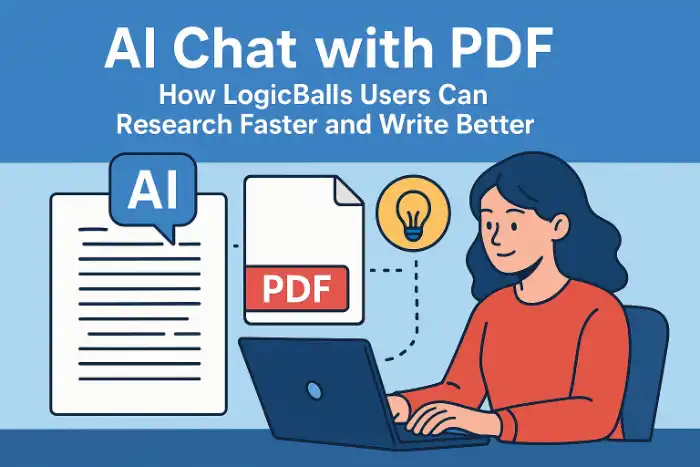Large Language Model Prompt Engineering for Creative Content
TL;DR
Understanding Large Language Models and Creative Content Creation
Alright, let's dive into the world of Large Language Models, or LLMs. It's kinda mind-blowing how far AI have come, right?
LLMs are basically super-smart AI models trained on massive amounts of text data. Think of them as really, really good parrots, but instead of mimicking sounds, they're mimicking language patterns.
Unlike older AI models that were designed for specific tasks, LLMs can handle a whole bunch of different things, from writing emails to translating languages. They're more like a general-purpose tool.
You've probably heard of some: GPT, Bard, and Llama are some of the big players. Each has their own quirks and strengths, but they all share that core LLM DNA.
AI is seriously shaking things up in content creation. It's not about replacing humans (yet!), but more about helping us work smarter and faster.
There's definitely pros and cons. AI can help with brainstorming, generate drafts, and even automate some of the more tedious tasks. But it can also lack that human touch and originality.
AI can spit out blog posts, social media updates, even scripts for videos. The quality varies, but it's getting better all the time.
So, with AI becoming more prevalent, how do we make sure the content it produces is actually any good? Well, that's where prompt engineering comes in, which we'll get into next. Tools like prompt testing frameworks can also help evaluate and refine prompts more systematically.
The Fundamentals of Prompt Engineering
Alright, let's get into the nitty-gritty of prompt engineering. Did you know that a well-crafted prompt can boost an LLM's performance by, like, a lot? It's true!
So, what makes a prompt good? It's not just about asking nicely; there's a bit more to it:
Instructions: You gotta be clear. Tell the AI exactly what you want. Instead of "write something about cars," try "write a short poem about the thrill of driving a classic sports car on a coastal highway." See the difference?
Context: Give the LLM some background. If you're asking it to write marketing copy for a new vegan cheese, tell it who the target audience is and what makes this cheese special.
Constraints: Set some limits! Want a tweet? Say "write a tweet under 280 characters" about the new cheese. Need a formal email? Specify the tone and length.
Input Data: feed the model relevant information. if you're asking it to summarize a research paper, give it the paper.
Ever wonder why some prompts seems to, like, break? It might be tokens!
LLMs don't "read" words like we do. They break text into tokens, which can be parts of words, punctuation, or even whole words.
There's usually a token limit. If your prompt is too long, the AI might just cut you off mid-sentence, or refuse to work at all. This limit affects not just the length of your prompt, but also how much information the LLM can process to generate its response. For example, a complex instruction might use up tokens faster than a simple one, potentially limiting the depth of the output. Understanding this can help you be more economical with your wording, choosing phrases that convey meaning efficiently.
So, keep it concise. Use shorter words, avoid unnecessary fluff, and get straight to the point. Every token counts!
Think of it like fitting clothes in a suitcase--you want to pack as much value as possible into the limited space.
Now that we get the basics, let's dig into some specific methods for applying prompt engineering to creative content...
Prompt Engineering Techniques for Creative Content
Alright, so, you wanna make AI really sing? Prompt engineering is where it's at! It's all about figuring out how to talk to these LLMs so they actually give you what you want. These techniques build on the fundamentals we just covered.
Zero-Shot Prompting: This is basically asking the AI to do something without showing it any examples. Kinda like throwing it in the deep end, right? For instance, you could ask it to "write a haiku about autumn," and it'll just... do it. A more complex creative task might be asking it to "generate a surrealist poem inspired by the feeling of déjà vu." While many LLMs can handle this, the output quality can vary wildly. It's considered zero-shot because no specific examples of surrealist poems or déjà vu poems were provided. This can be hit or miss; sometimes the AI just doesn't "get" what you're after, leading to generic or irrelevant output.
Few-Shot Prompting: Here, you do give the AI a few examples to get it started. Like, "write a product description in a funny tone. Example: 'This toaster is so good, it'll make you wanna slap yo mama!' Now write one for a blender." This is awesome for creating content with a specific style or voice. If you want AI to write emails that sound like you, few-shot prompting is the way to go. It also helps LLMs understand complex tasks better. According to Prompt Engineering for Large Language Models, carefully designed prompts can lead to significantly better outputs. For example, providing two or three examples of a specific writing style for short fiction can guide the LLM to produce a more consistent and nuanced narrative than it might with just a general instruction.
Chain-of-Thought Prompting: This is where you get the AI to explain its reasoning step-by-step. Instead of just asking "what's the capital of Australia?" you'd ask "what's the capital of Australia? Explain your reasoning." It's super useful for complex creative tasks that require logic, like writing a detective story or planning a marketing campaign. You can see how the AI is thinking, and make sure it's on the right track. It also encourages more detailed answers, allowing you to follow its creative process.
Beyond these techniques, continuous improvement is key to mastering prompt engineering. This leads us to advanced strategies for refining your prompts even further...
Advanced Prompting Strategies
Iterative prompt refinement is kinda like tweaking a recipe until it's just right, y'know? The goal? Better LLM outputs through testing and feedback.
Test Prompts: Don't just use one prompt and hope for the best. Try variations! For example, if you're asking an LLM to write a product description, test different approaches:
Varying Temperature: A higher "temperature" setting often leads to more creative, surprising outputs, while a lower setting results in more predictable, focused text. Try prompts with both high and low temperatures to see which fits your creative goal.
Adding Negative Constraints: Instead of just saying what you want, tell it what not to do. For example, "Write a fantasy story about a dragon, but do not include any knights or princesses."
Changing Instruction Phrasing: Rephrase your core instruction in several ways. "Write a poem about rain" versus "Compose a lyrical piece capturing the essence of a spring shower."
Gather Feedback: Once you have some outputs, you need to evaluate them.
Self-Review: Read the output critically. Does it meet your initial goals? Is it coherent? Does it sound natural?
User Testing: If the content is for an audience, get their input. Ask them if the tone is right, if it's engaging, or if it makes sense.
Expert Review: If you're working on a specialized creative project, have someone knowledgeable in that field review the AI's output.
Version Control: Keep track of your prompt changes and the resulting outputs. This is crucial for understanding what works and why.
Simple Tracking: Use a spreadsheet or a document to log your prompts, the LLM used, the settings (like temperature), and the resulting output. Note down what you liked and didn't like.
Dedicated Tools: For more complex projects, consider using tools like Git (though typically for code, it can be adapted for text files) or specialized prompt management platforms that are starting to emerge. This helps you revert to previous versions if a new prompt direction doesn't pan out.
So, what if you mix and match? Let's find out...
Best Practices for Prompt Engineering
Alright, so you've made it this far—pat yourself on the back! You're basically a prompt engineer now. But uh, before you go wild, let's nail down some, like, actual best practices, yeah?
Be Crystal Clear: Don't leave any room for AI to misinterpret what you want. For example, instead of "write a product description," try "write a compelling product description for a new line of organic dog treats, targeting millennial pet owners."
Avoid Vague Language: "Make it sound good" isn't gonna cut it. Specify the tone: "make it sound humorous and relatable, like a friend giving advice."
Provide Rich Context: The more the AI knows about the subject, audience, and goal, the better the output will be. If you're writing copy for a new financial app, explain who the target user is, what their financial goals are, and what makes the app unique.
Iterate Relentlessly: Prompt engineering is not a "one-and-done" thing. Experiment, tweak, and refine your prompts based on the outputs you get—it's more of a loop, not a line. Consider ethical implications too; ensure your prompts don't lead to biased or harmful content.
Understand Your Model: Different LLMs have different strengths and weaknesses. What works for GPT-4 might not work as well for Bard. Experiment with various models to see which best suits your creative needs.
So, now what? Well, you're ready to go out there and start crafting some amazing prompts. Just remember to be clear, specific, and keep tweaking til you nail it. The field of prompt engineering is always evolving, so keep learning, keep experimenting, and embrace the creative possibilities that emerge when you master the art of talking to AI.



